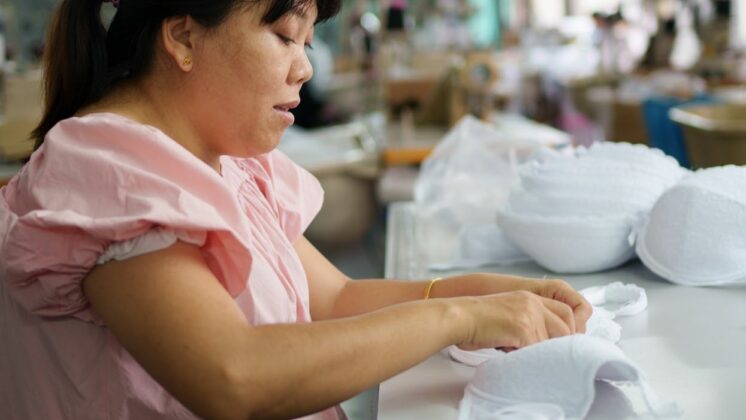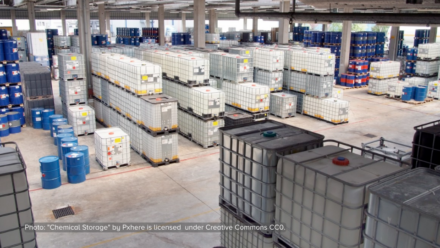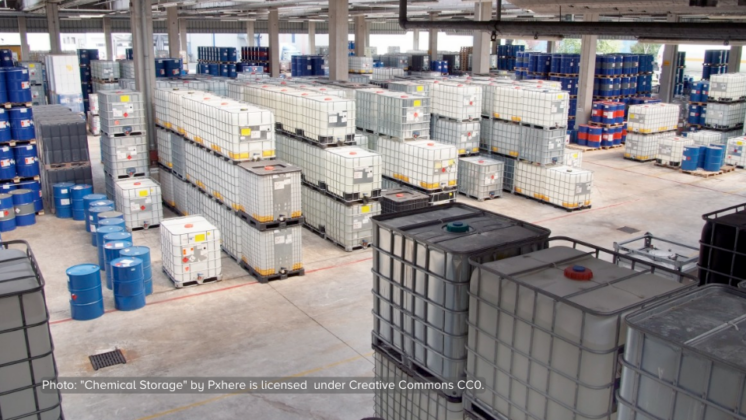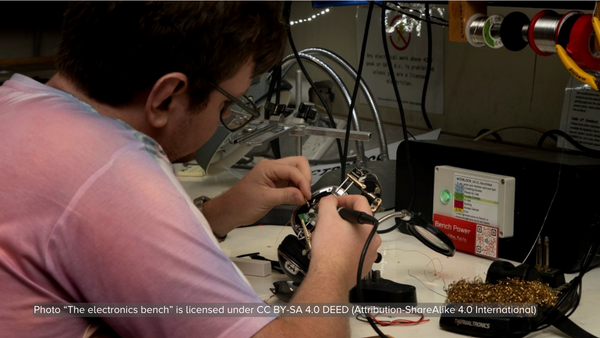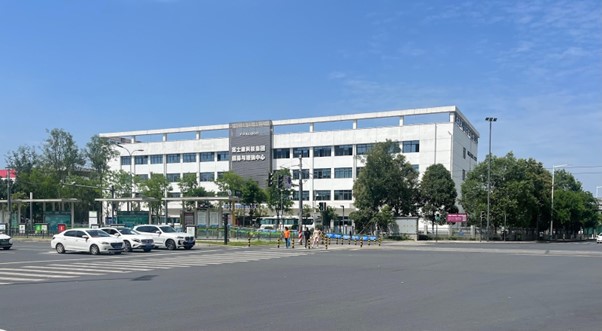As we mark the International Women’s day and remember the struggles to get access to work for women everywhere, let’s also remember that the right to work includes the right to a safe working environment. The 8th March is a good day to start demanding women’s right to decent work in the electronics industry, argues SMART researcher Maja van der Velden.
 Photo: Fairphone
Photo: FairphoneUnlike these women, many women in the electronics industry are faced with the insecurities of precarious work.
A report published by the UN in August 2018 estimated that a worker dies every 30 seconds as a result of exposure to hazardous materials in the workplace. Many of those workplaces produce electronics and the majority are full of working women.
Women in the majority
Occupational health and safety in the electronics industry is a vital issue for working women in Asia, where women form the majority of workers in the industry. According to a IPEN/COFED report published in 2017, in Vietnam alone, 80% of workers in the electronics industry are women. The vast majority work at assembly lines.
Stories of Women Workers in Vietnam’s Electronics Industry
Although from South Korea, Samsung makes 50% of its mobile phones in Vietnam (only 8% in South Korea). Interviews with women working in Samsung factories in Vietnam show that they know they lack a safe and healthy work environment, but that they also lack information about the chemicals they are working with. In addition, they face many of the insecurities of precarious work, such as no work contracts and exhausting working conditions, like long hours standing at work-stations with few breaks.
The dominance of women in the Vietnam electronics sector is replicated elsewhere. A report from Brazil showed that factories preferred to hire young women for the assembly line because they “are regarded as less likely to stand up for their rights”. In Thailand, over half of the 500,000 workers in the electronics industry are women, of which 90% are between 18-31 years old. Also in China and Malaysia women form the majority of workers in factories that produce electronics.
Off-shoring the Risks
There is, of course, a longer history here. When the electronics industry in North America found out about the risks from chemicals in manufacturing, they did something about it. But what they did, was only to move the risks off-shore and onto the bodies of women far away.
Under the title “American Chipmakers Had a Toxic Problem. Then They Outsourced It,” Bloomberg Businessweek documents increased miscarriages and birth defects among women workers in the electronics industry. The crux of the story is that already in 1988, American scientists reported on the increased risks of miscarriage and other health problems among women workers in the semiconductor industry. This was confirmed in a larger study covering 14 companies in the US, published in 1995. As a result, a coalition of 25 US companies pledged to phase out the use of toxic chemicals.
In practice, that meant moving phases of production to low-income countries, like China. New studies, this time looking at women workers in Asia, report the same toxic chemicals and the same health problems. According to Bloomberg, companies in the coalition, such as IBM and Apple, continued to buy chips produced with the same toxic chemicals, but this time Asian women, rather than American women, got sick, and some of them actually died (video, 25 mins).
Sick from work
The fact that women can get sick from working at assembly lines in the semiconductor industry has been documented for years by Supporters for the Health and Rights of People in the Semiconductor industry (SHARPS). In 2017, they released Stories from the Clean Room (7 mins excerpt), a documentary focusing on the families of 20 victims of toxic chemicals used in the electronics industry in South Korea. Most of the victims were women.
Recent research (2018) investigating chemical use in two factories producing memory chips in South Korea showed that of more than 45,000 tons of chemicals used in each factory, 30% consisted of sulfuric acid, a highly carcinogenic chemical. Of the more than 420 chemical products used, 40% contained chemicals covered by trade secret agreements, making it impossible to measure their effect on women’s health. The impacts are therefore unknown.
That trade secrets prevent workers from being properly informed about the materials they work with, is an appalling manifestation of the trade-off between people’s health and a company’s profits. It also has knock-on effects in the social security systems meant to support people who get sick. Trade secrets prevent workers from claiming compensation when they become sick, or from arguing in court that their sickness is linked to their work.
When the family of a Samsung worker in Vietnam finally won the right to access company reports to the labour ministry that could shed light on the use of chemicals in the workplace, they were blocked by the Ministry of Commerce, which argued that the Samsung reports contained not just trade secrets, but also sensitive information about national technology. The struggle continued, and in November 2018, Samsung apologised to sick factory workers and agreed on a compensation package.
After decade long stand-off, Samsung apologises to workers for illness and deaths
Stop the exploitation
The UN Special Rapporteur on hazardous substances and wastes reported in 2018 that “one worker dies approximately every 30 seconds from exposure to toxic chemicals, pesticides, radiation and other hazardous substances, according to the International Labour Organization (ILO)“ and called it “a vicious form of exploitation”. GoodElectronics, a network of grassroots organisations, unions, academics, and activists working to improve the global electronics supply chain, followed up the UN report with a report of their own, focusing on such exploitation in the electronics industry. They reiterated that the majority of workers in this industry are young women of reproductive age, who not only risk their own health, but also that of their offspring.
Paper: Exploitation by deception in the electronics industry
When we mark International Women’s day on 8 March and remember the struggles to get access to work for women everywhere, let’s also remember that the right to work includes the right to a safe working environment. On April 28, on International Workers Memorial Day, the theme is Taking control – removing dangerous substances from the workplace. The 8 of March is a good day to start demanding women’s right to decent work in the electronics industry.
Read the original article here.


